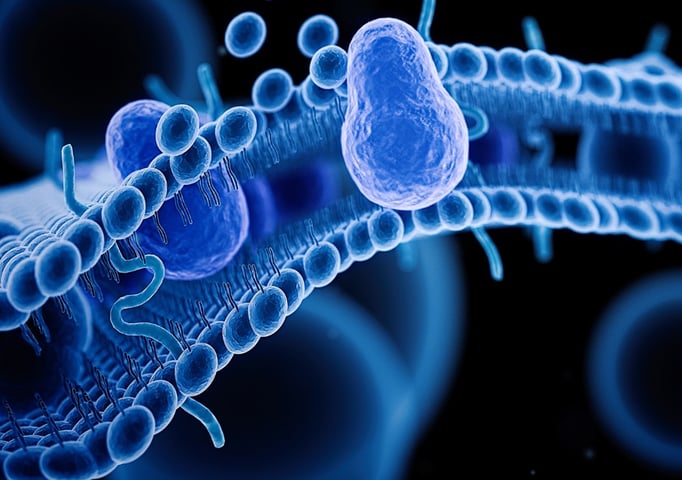
Model membrane platforms are utilized in various fundamental and application research fields such as material science, bio-nanotechnology and drug discovery. To characterize these systems and understand their properties and behavior under various conditions, it is often necessary to use more than one analysis method. So which analysis methods should you use? To learn more, we talked to Prof. Nam-Joon Cho, Nanyang technological university in Singapore who has extensive experience working with lipid model systems. He shared with us a list of some of the technologies he uses in his research.
Lipid-based systems, monolayers, bilayers, and vesicles could be used as model membrane platforms. In particular, supported lipid bilayer systems have proven to be of special interest. Apart from the capability to mimic the biological membrane, supported lipid bilayer systems can be easily integrated with surface-based analytical techniques, which greatly facilitates the investigation of membrane related processes such as protein binding and cell-signaling.
To characterize these systems and understand their properties and behavior under various conditions, it is often necessary to employ more than one analytical method. Information extracted from complementary analytical methods can offer unique insights into the system under investigation. Prof. Cho has extensive experience working with lipid model systems. Over the years, he has collected a set of technologies that he finds particularly useful in his lipid-related work. In Prof. Cho’s instrument portfolio, you will find technologies based on imaging as well as various quantification techniques.
Each of the analysis methods in his instrument portfolio provides key information about the system under study. Combined they enable him and his team to get a deeper understanding of properties and behavior of the lipid-based systems that they are studying.
In the overview, accessed below, Prof. Cho has compiled a list of analytical methods that he uses in his research to characterize lipid-based systems. The overview includes information about which technologies that he uses for his lipid-related work, what information each method offers, what are the pros and cons of the respective technology, and references to publications where the usage is exemplified.

Table 1. A brief excerpt from Prof. Cho's instrument portfolio overview, showing part of the information listed for one of the method that he uses.
Download the portfolio overview below to learn more about which technologies that could be used for lipid-based research, what the methods are suitable for and how they in combination can offer unique insights into the system under study.
Editor’s note: This post was originally published in July 2019 and has been updated for comprehensiveness
Discover how QCM-D enables real-time, label-free analysis of supported lipid membrane formation, structure, and dynamics for advanced research
QCM-D was used to compare the potency and mechanisms of action of two different detergents in disrupting lipid membranes
Read about Prof. Jackman's experience using QCM-D to study surfactant-interaction with model membranes
Read about Prof. Jackman's experience using QCM-D in the field of membrane biophysics.
Watch the webinar to learn more about how to combine QCM-D and Neutron reflectrometry to examine membrane biochemistry at the solid-liquid Interface
Read about two cases where QSense QCM-D technology was used to explore viral membrane disruption and an antiviral strategy towards pandemic preparedness.
Learn about how QSense QCM-D is used to monitor vesicle interaction with solid substrates and to characterize surface-adsorbed vesicle layers.
Learn more about how Lipid Envelope Antiviral Disruption (LEAD) maybe could be used in the future to address infectious disease such as Zika, Dengue and Hepatitis C.
